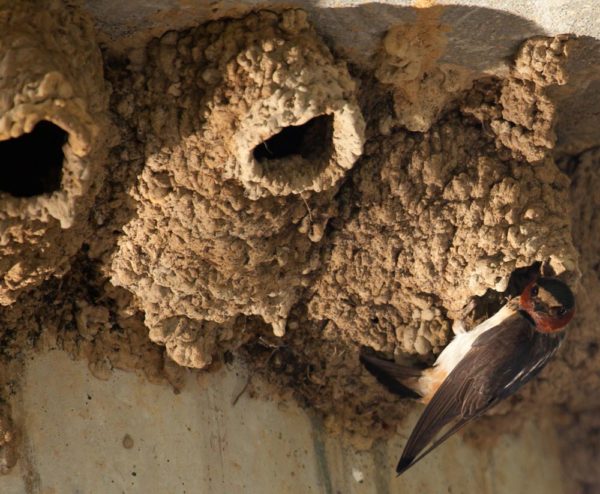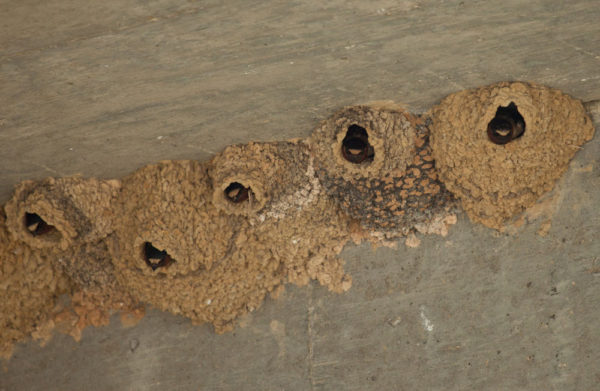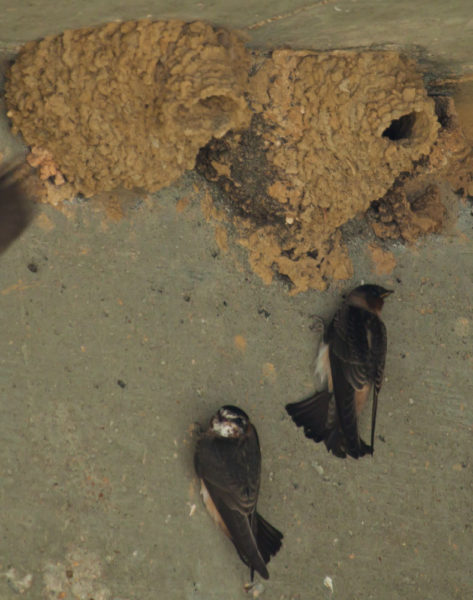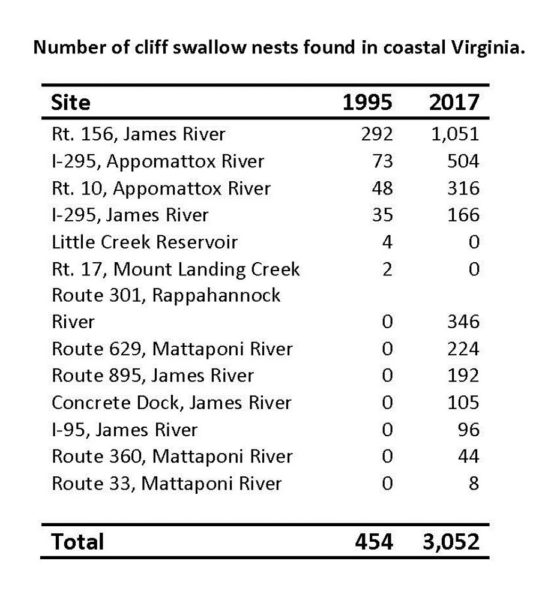Cliff swallow population explosion continues in coastal Virginia

Grace Still Fishing at TRS July 1, 2017
July 3, 2017
Grace at Tidewater Research Station July 10, 2017
July 10, 2017Cliff swallows are a wonder to see up close. Adults are richly colored in a combination of deep chestnut, cream, blue, and salmon that is reminiscent of the earthy colors of their winter grounds in the lowlands of Argentina, Paraguay, and southern Brazil. Following spring arrival on the breeding grounds, pairs gather mud by the mouthfuls and craft unmistakable gourd-like nest structures. Historically, these structures were built on exposed cliff faces under overhangs. With the expansion of artificial structures throughout the continent the swallows rapidly adapted, attaching their nests to barns, dams, culverts and bridges, and expanding their range beyond the western mountains. Over the past 150 years cliff swallows have marched across the continent, disappeared from some regions, and more recently mounted a selected resurgence.

Cliff swallow clings onto a nest entrance to feed a brood. Adults forage on swarms of flying insects and feed a bolus of compressed insects to young in the nest. Photo by Bryan Watts.
The Coastal Plain of southeastern North America is experiencing a swallow boom. The most recent colonization of this physiographic region began 50 years ago when birds moved across the Piedmont and began to establish footholds on bridges of the inner Coastal Plain. In Virginia, Fred Scott of Richmond recorded the first breeding record within the Coastal Plain in 1979, when he documented 12 nests on the Benjamin Harrison Bridge along the James River near Hopewell. In 1995, The Center for Conservation Biology conducted a systematic survey of breeding areas throughout the Coastal Plain of Virginia to establish a population benchmark and to document geographic expansion. During the breeding seasons of 2016 and 2017, this effort was repeated in order to establish a second benchmark.

Cliff swallows peer out of their nest entrances as they incubate clutches. Cliff swallows are highly social and build nests in clusters that may include 100 nests or more. They have been known to transfer eggs and chicks from one nest to another. Photo by Bryan Watts.
Since 1995, the cliff swallow population has increased nearly seven-fold in coastal Virginia from 454 to 3,052 pairs within 11 colony sites. The largest colony site, supporting more than 1,000 pairs, continues to be on the Benjamin Harrison Bridge. Since their discovery in 1979, the population has grown exponentially with an average doubling time of just 4.8 years and has continued to expand geographically.

Fledgling cliff swallows clinging onto concrete under a bridge and waiting to be fed. Juvenile cliff swallows express a wide range of head plumage. Photo by Bryan Watts.
Breeding cliff swallows require surfaces protected from the weather and predators, a source of mud to construct their nests, and swarms of flying insects to raise broods. Bridges are ideal places for nesting because they provide both protected surfaces and access to mud along their banks. However, only 10% of the bridges surveyed currently support swallow colonies. One of the most interesting aspects of the current breeding distribution is that all occupied bridges occur within tidal-fresh reaches of rivers where salinity is low, presumably facilitating high insect production. Work is needed to clarify the link between salinity and insect production that may help to clarify constraints on distribution as the ongoing colonization plays out.

Data from CCB.
Written by Bryan Watts | bdwatt@wm.edu | (757) 221-2247
July 5, 2017



